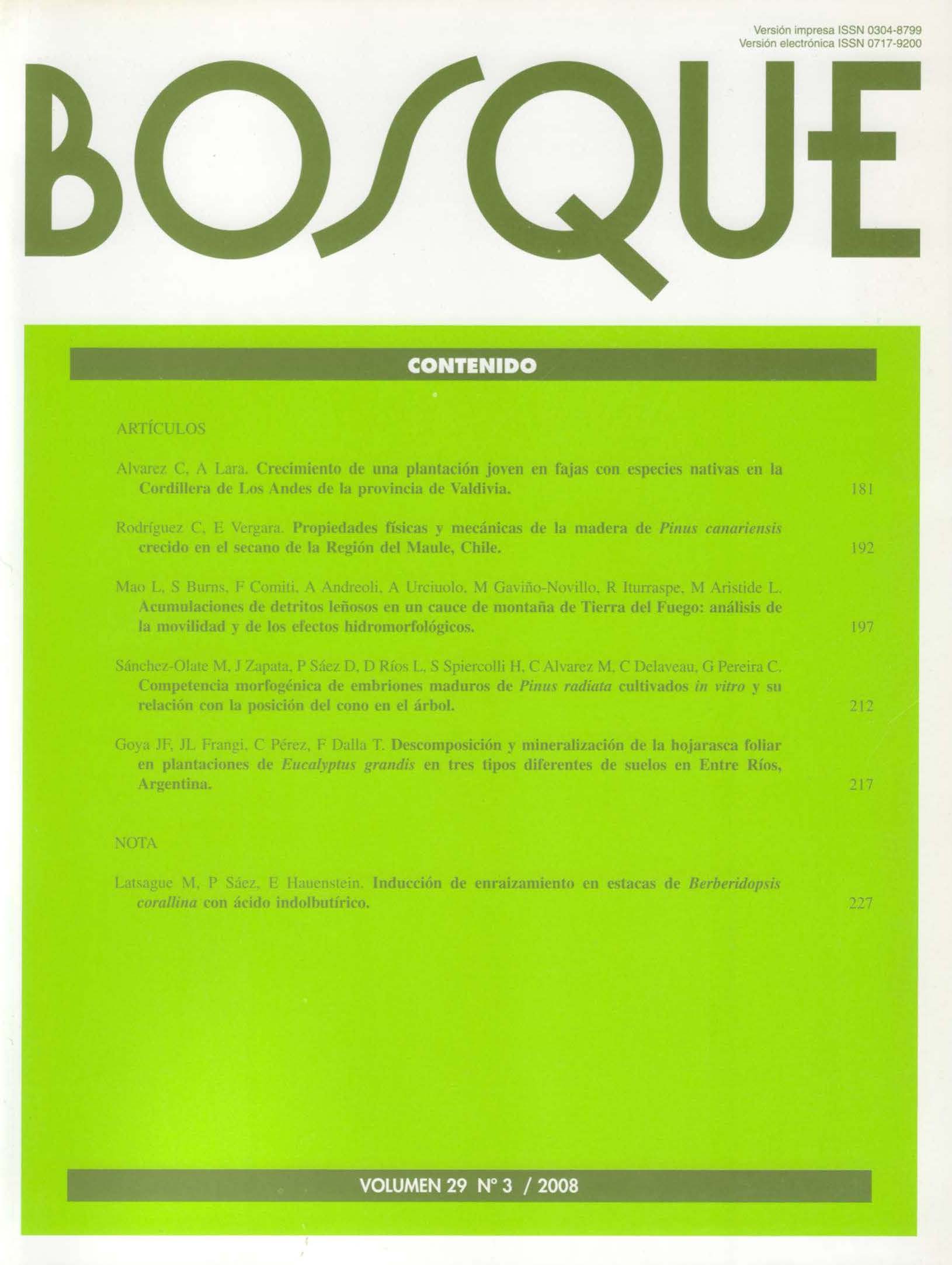Descomposición y mineralización de la hojarasca foliar en plantaciones de Eucalyptus grandis en tres tipos diferentes de suelos en Entre Ríos, Argentina
Contenido principal del artículo
Resumen
La descomposición de la materia orgánica que ingresa al suelo a través de la caída a la hojarasca es una fuente importante de nutrientes para la vegetación. Se estimaron la tasa de descomposición de la materia orgánica, la liberación/inmovilización de nitrógeno, fósforo, potasio, calcio, magnesio, manganeso, hierro y aluminio de hojas recién caídas de Eucalyptus grandis utilizando bolsas de descomposición en parcelas de ensayo situadas en tres tipos de suelos: Oxic Quartzipsamment (arenoso), Fluventic Haplumbrept (mestizo) y Argiudolic Pelludert (arcilloso). La tasa anual de descomposición de la materia seca (k) fue más rápida en el suelo arcilloso (0,44) que en los suelos arenoso y mestizo (0,30). El patrón temporal de cambios de las concentraciones de nutrientes en la hojarasca fue similar entre los suelos arenoso y mestizo, comparados con el arcilloso. La concentración de nitrógeno y fósforo aumentó con el tiempo en los tres sitios, pero su inmovilización fue mayor en el sitio arcilloso. Las concentraciones de calcio, magnesio y manganeso fluctuaron de forma diferente en cada tipo de suelo. En cada sitio, las concentraciones de hierro y aluminio aumentaron de manera similar. Una mayor tasa de pérdida de masa seca, junto con un aumento de inmovilización de nitrógeno y fósforo se observó en el suelo arcilloso, relativamente más rico en nutrientes.

